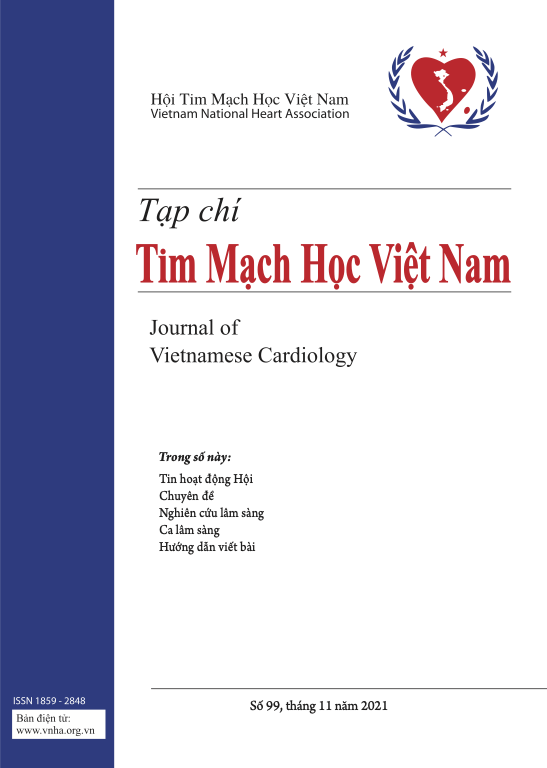Nghiên cứu nồng độ Lp-Pla2 ở bệnh nhân nhồi máu cơ tim cấp
Tóm tắt
Nghiên cứu nồng độ Lp-Pla2 ở bệnh nhân nhồi máu cơ tim cấpTài liệu tham khảo
1. Nguyễn Hữu Trâm Em (2010), “Chỉ điểm nguy cơ tim mạch mới: Những nguy cơ lâm sàng”, Hội nghị Tim mạch Miền Trung mở rộng lần thứ 5.
![]()
2. Đỗ Văn Hùng (2013), Nghiên cứu nồng độ Lp-PLA2 ở bệnh nhân tăng huyết áp có hội chứng chuyển hóa, tr.48-56.
![]()
3. Lê Thị Bích Thuận (2005), Nghiên cứu biến đổi Protein C trong bệnh mạch vành, Luận án Tiến sĩ Y học, Đại học Y Dược Huế, tr.1-117.
![]()
4.Ballantyne C.M, Hoogeveen R.C, Bang H et al (2004), “Lipoprotein-associated phospholipase A2, high-sensitivity C-reactive protein, and risk for incident coronary heart disease in middle-aged men and
![]()
women in the Atherosclerosis Risk in Communities (ARIC) study”, Circulation, 109, pp.837-842.
![]()
5. Brilakis E.S, McConnell J.P, Lennon R.J et al (2004), “Association of lipoprotein-associated phospholipase A2 levels with coronary artery disease risk factors, angiographic coronary artery disease, and major adverse events at follow-up”, European heart journal, 26 (2), pp.137 - 144.
![]()
6. Corsetti J.P, Rainwater D.L, Moss A.J et al (2006), “High Lipoprotein-Associated Phospholipase A2 Is a Risk Factor for Recurrent Coronary Events in Postinfarction Patients”, Clinical chemistry, 52 (7), pp.1331 - 1337.
![]()
7. Daniels L.B, Laughlin G.A, Sarno M.J et al (2008), “Lipoprotein-Associated Phospholipase A2 Is anIndependent Predictor of Incident Coronary Heart Disease in an Apparently Healthy Older Population”, The Rancho Bernardo Study, J Am Coll Cardiol, 51, pp.913 - 919.
![]()
8. Gerber y, McConnell J.P, Jaffe A.S et al (2006), “Plasma Lipoprotein-associated Phospholipase A2 and prognosis after myocardial infrarction in the community”, Arterioscler thromb vasc boil, 26, pp.2517 - 2522.
![]()
9. Gong H, Du y.M, Zhong L et al (2011), “Plasma Lipoprotein-associated Phospholipase A2in Patients with Metabolic Syndrome and Carotid Atherosclerosis”, Lipids in Health and Disease, 10 (13), pp.2- 8.
![]()
10. Hatoum i.J, Cook N.R, Nelson J.J et al (2011), “Lipoprotein-Associated Phospholipase A2 Activity Improves Risk Discrimination of Incident Coronary Heart Disease Among women”, Am Heart J, 161 (3), pp.516-522.
![]()
11. iribarren C, Gross M.D, Darbinian J.A et al (2005), “Association of Lipoprotein-Associated Phospholipase A2 Mass and Activity With Calcified Coronary Plaque in Young Adults. The CARDIA Study”, Arterioscler Thromb Vasc Biol, 25, pp.216 - 221.
![]()
12. Killingsworth L.M (2006), PLAC - A Specifi c Marker for Vascular Inflammation.
![]()
13. Koenig W and Khuseyinova N (2006), “Emerging Role of Inflammatory Biomarkers in Cardiovascular Risk Assessment”, Department of Internal Medicine II - Cardiology, University of Ulm Medical Center, pp.1-5.
![]()
14. Oei H.H.S, Van der Meer i.M, Hofman A et al (2005), “Lipoprotein-associated phospholipase A2 activity is associated with risk of coronary heart disease and ischemic stroke: the Rotterdam Study”, Circulation, 111, pp.570-575.
![]()
15. Oldgren J, James S.K, Siegbahn A and Wallentin L (2007), “Lipoprotein-associated phospholipase A2 does not predict mortality or new ischaemic events in acute coronary syndrome patients”, European Heart Journal, 28, pp.699-704.
![]()
16. Packard C.J, O’Reilly D.S.J, Caslake M.J et al (2000), “Lipoprotein-Associated Phospholipase A2 as an Independent Predictor of Coronary Heart Disease. West of Scotland Coronary Prevention Study Group”, N Eng J Med, 343, pp.1148-1155.
![]()
18. Tsimikas S, Willeit J, Knoflach M et al (2009), “Lipoprotein-associated phospholipase A2 activity, ferritin levels, metabolic syndrome and 10 year cardiovascular and non-cardiovascular mortality: Results from the Bruneck study”, European Heart Journal, 30, pp.107 - 115.
![]()
19. Sabatine M.S, Morrow D.A, O’Donoghue M et al (2007), “Prognostic Utility of Lipoprotein- Associated Phospholipase A2 for Cardiovascular Outcomes in Patients With Stable Coronary Artery Disease”, Arterioscler Thromb Vasc Biol, 27, pp.2463 - 2469.
![]()
20. Zalewski A, Nelson J.J, Hegg L and Macphee C (2006), “Lp-PLA2: A New Kid on the Block”, Clinical Chemistry, 52 (9), pp.1645-1650.
![]()








